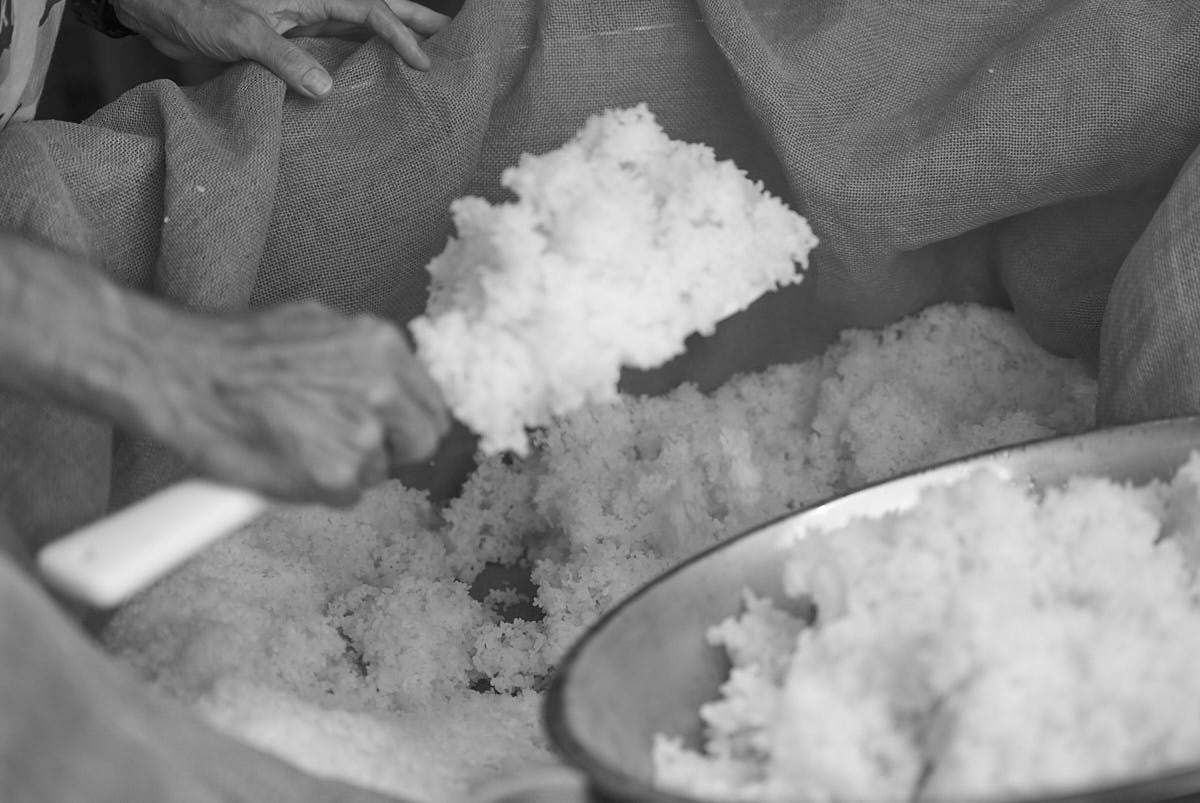PHILOSOPHY
We continue to walk with customers, farmers, and local businesses while respecting the nature and culture of Hawaii. We make craft sake from Hawaii to the world with Aloha.
We cherish the encounters with our customers. Focusing on collaboration with farmers & local companies, we bring sake from Hawaii to the rest of the world through sake brewing.
Since wineries have recently opened in Japan, wine has become more familiar to the Japanese people, and a culture of enjoying wine has grown. The same thing happened in other countries, thus wine has grown to be loved all over the world.
Likewise, I believe that if sake were made in places other than Japan,sake made in Japan will also be consumed by the rest of the world. We are convinced that we can support the Japanese sake market by making sake in Hawaii, and through this made-in-Hawaii sake, we can spread sake to the rest of the world.
ISLANDER SAKE BREWERY HAWAII
Chiaki Takahashi
President
SAKE
Dr. Chiaki Takahashi, our brewmaster, was a lecturer at Okayama University of Science’s brewing department. A group in Okayama cultivates rice for sake without the use of pesticides or fertilizers. The natural rice is transported to Hawaii exclusively for sake production, where we use the melted snow on the Big Island. Our experience will not only taste great when you drink it, but also make you feel better the next morning.
Dr. Takahashi asserts. My intention is to aid Japanese farmers. According to her, there are individuals in Japan who have questioned the use of pesticides and have achieved pesticide-free farming on their own. It began with apple growers in Aomori. By going pesticide-free, apple trees become stronger and more vigorous. The number of insects will increase, but apples will also become stronger. On the other hand, the use of pesticides weakens the apples and decreases their vitality. Synthetic fertilizers and pesticides have been reported to be killing the earth, not only in Japan but also in the United States.
The pesticide-free cultivation of apples was completed after nearly 10 years of efforts that resulted in no income. Farmers in Okayama, which is far away from Aomori, have sympathized with this action. In Okayama, rice is grown naturally without the use of fertilizers, pesticides, or herbicides. Omachi is the rice that is used. The rice is a source of strong life force and a robust flavor. It also has a wonderful flavor that sets it apart from other sake after it has aged for nearly a year.
LEGACY OF JAPANESE IMMIGRANTS IN SAKE BREWING
Hawaii X Japan
2018 marked the 150th anniversary since the arrival of the first Japanese immigrants in Hawaii.The Japanese cleared up the sugar cane field and cooperated with historical Hawaiian companies and indigenous Hawaiians, and they have created a sugar industry. Their efforts have become the cornerstone of good relationship between Hawaii and Japan, which continues to this day.
The history of sake making in Hawaii has exceeded for more than a century.Sake was not only for remembering home but also to reduce fatigue and creating motivation to continue the hard work. In the peak period, there were 10-brewing- companies in Hawaii but only one Sake brewery remained after the World WarII.
In 1954, the only existed brewery, Honolulu Sake & Ice Company received reliable researcher from the Japanese government. The researcher, Mr. Takao Nihei, discovered new brewing technique under the hot climate and contributed to the quality improvement of Hawaiian sake for 30 years. The company was closed down in 1986. Although commercial brewing business in Hawaii was not conducted thereafter, Mr. Nihei’s techniques are widely used at sake breweries in Japan today.
We are proud of the difficulty of Japanese sake brewing by the predecessors under the tropical climate and the passion to overcame it. In 2018, we established new craft sake brewery in the beautiful islands of Hawaii.We make craft sake using highly evolved brewing technique with long history of local Japanese sake and spirits of Aloha.
Concept
The unique local Hawaiian Sake and related beverages available to everyone.
People in Hawaii have digested and absorbed various cultures of other countries and created them as Hawaiian culture. The Aloha shirt, the Loco Moco, and the bon dance are things that were brought from Japan to Hawaii and evolved on their own.
There are abundant nature’s pristine water in Hawaii. We use volcano, mountain spring, and deep sea waters with many agricultural crops to deliver very best sake. Sake brewing also crosses the sea to a new stage in Hawaii x Japan.
MISSION
We are bringing the best sake making techniques developed by Brew Masters in Japan to Hawaii, and we intend to make Hawaii strong with long history and deep relationships to a society that will withstand the next 150 years.
In particular: We will bring the latest and best technology we know now, continue making further technology development, we will make sake that is loved by the people of Hawaii.
Through sake brewing business, we intend to strengthen the ties of interaction on the islands of Hawaii and the reinforcement of Aloha spirit.
Actively educating young people on the island sake brewing and crop production, and provide daily safe working condition for local workers.
We will contribute to society in cooperation with the local communities and organizations, and will transform Hawaii into a place that is pleasant for people to live in.
In addition to Japanese sake brewery, we will exchange information with the world’s sake breweries including the continental United States, and we will do our best to develop the beverage brewing industry.
COMPANY PROFILE
Business Name
United Sake Co. Ltd.,
dba Islander Sake Brewery Hawaii
Primary Address
25 N. King St.. Honolulu, HI 96817
Telephone
(808) 517-8188
Year Established
2018
Distribution Area
Mainly in the Hawaiian Islands
Continental United States, Japan, Asia
Group affiliate
United Sake Consulting
Toranomon, Minato-ku, Tokyo
PHONE : (03) 6833-0133
Email
info@islandersake.com









